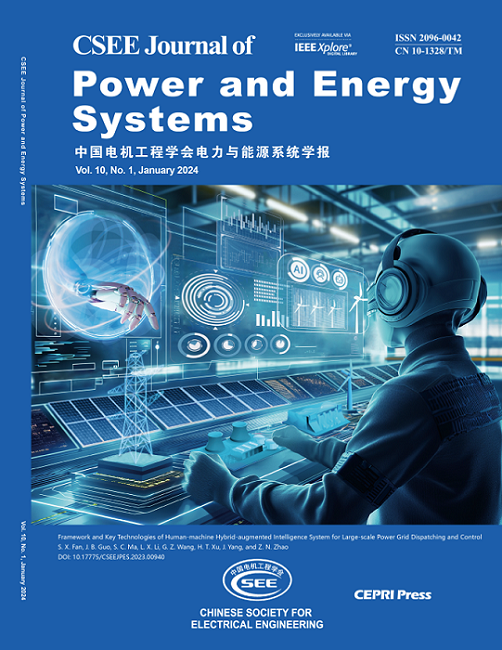考虑阀点加载效应的多区域OPF双层优化机制
IF 5.9
2区 工程技术
Q2 ENERGY & FUELS
引用次数: 0
摘要
对于多区域最优潮流问题,最优目标通常是用二阶多项式表示的燃料成本函数。然而,阀点加载效应的代价曲线是正弦函数与多项式函数叠加形成的超越函数,使得目标函数不可凸不可微。传统的分布式优化技术很难直接求解。因此,有必要从另一个角度实现多区域OPF的分布式解决方案。本文构建了一种新的双层优化机制。该算法将分布式元启发式优化算法(DMHO)置于顶层以优化各区域的调度,并在每次迭代中嵌入分布式潮流计算方法作为底层以最小化功率平衡失配。数值实验表明,该方法不仅实现了多区域OPF分布式解,而且加快了收敛速度,提高了解的精度,增强了鲁棒性。并在实际的分布式环境中进行了完全去中心化的计算实验,以检验其实用性和计算效率。本文章由计算机程序翻译,如有差异,请以英文原文为准。
Double-Layer Optimization Mechanism for Multi-Area OPF Considering Valve-Point Loading Effect
In terms of the multi-area optimal power flow (OPF) problem, the optimized objectives are always a fuel cost function expressed by a second-order polynomial. However, the valve-point loading effect, whose cost curve is a transcendental function formed by the superposition of the sine and polynomial function, will make the objective function non-convex and non-differentiable. Conventional distributed optimization technologies can hardly make a solution directly. Therefore, it is necessary to realize a distributed solution for multi-area OPF from another point of view. In this paper, we constitute a new double-layer optimization mechanism. The proposed distributed meta-heuristic optimization (DMHO) algorithm is put on the top layer to optimize the dispatching of each area, and in each iteration a distributed power flow calculation method is embedded as the bottom layer to minimize the mismatch of power balance. Numerical experiments demonstrate that the proposed approach not only implements a multi-area OPF distributed solution but also accelerates the convergence rate, improves the solution accuracy and enhances the robustness. In addition, a fully decentralized computation experiment is performed in an actual distributed environment to test its practicability and computation efficiency.
求助全文
通过发布文献求助,成功后即可免费获取论文全文。
去求助
来源期刊

CSEE Journal of Power and Energy Systems
Energy-Energy (all)
CiteScore
11.80
自引率
12.70%
发文量
389
审稿时长
26 weeks
期刊介绍:
The CSEE Journal of Power and Energy Systems (JPES) is an international bimonthly journal published by the Chinese Society for Electrical Engineering (CSEE) in collaboration with CEPRI (China Electric Power Research Institute) and IEEE (The Institute of Electrical and Electronics Engineers) Inc. Indexed by SCI, Scopus, INSPEC, CSAD (Chinese Science Abstracts Database), DOAJ, and ProQuest, it serves as a platform for reporting cutting-edge theories, methods, technologies, and applications shaping the development of power systems in energy transition. The journal offers authors an international platform to enhance the reach and impact of their contributions.
 求助内容:
求助内容: 应助结果提醒方式:
应助结果提醒方式:


